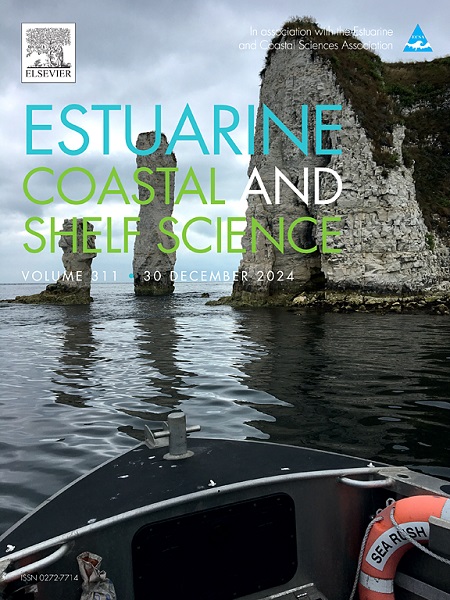Assessment of the ecological status of the Gongolaria abies-marina forests (Sargassaceae, Phaeophyceae) in the Canary Islands, Northeast Atlantic ocean
IF 2.6
3区 地球科学
Q1 MARINE & FRESHWATER BIOLOGY
引用次数: 0
Abstract
Gongolaria abies-marina is a threatened habitat-forming species. It was once widespread across the shallow subtidal zones of the Canary Islands, but most of these forests have now disappeared. In this study, we present the first assessment of the status of G. abies-marina forests at multiple spatial scales. We evaluated canopy cover and thallus length, along with key forest traits such as community structure, and community descriptors (richness and Shannon‒Wiener diversity). Additionally, we examined the relationships of these ecological descriptors within a range of environmental and anthropogenic variables. The results revealed marked spatial variability in the condition of G. abies-marina forests. In the southern parts of the islands, only small patches or isolated individuals were observed, characterized by low G. abies-marina cover and limited thallus development. In contrast, better forest conditions were recorded along the northern coasts, where populations were larger and, in some sites, formed continuous belts. Both cover and thallus length were higher in these sites and were positively linked to the forest size. Among the environmental variables, wave exposure and cloud cover showed the strongest relationship with G. abies-marina cover and thallus length. No clear relationships were found between the abundance of G. abies-marina and human impacts; however, associations with certain community species were detected.
东北大西洋加那利群岛珙桐森林生态状况评价(马尾草科,褐藻科
红月桂是一种受威胁的生境形成物种。它曾经广泛分布在加那利群岛的浅海潮下地带,但这些森林中的大部分现在已经消失了。在本研究中,我们首次在多个空间尺度上对白桦滨岸林的现状进行了评估。我们评估了冠层盖度和菌体长度,以及群落结构和群落描述符(丰富度和Shannon-Wiener多样性)等关键森林性状。此外,我们研究了这些生态描述符在一系列环境和人为变量中的关系。结果表明,冷杉林分状况具有明显的空间变异性。在岛屿的南部,只观察到小块或孤立的个体,其特征是低的G. abies-marina覆盖和有限的菌体发育。相比之下,北部海岸的森林条件较好,那里的种群较多,在一些地方形成了连续的带。盖度和菌体长度均较高,且与森林面积呈正相关。在环境变量中,波浪暴露和云量对绿僵菌盖和菌体长度的影响最大。未发现赤霉素的丰度与人类活动之间存在明显的关系;然而,与某些群落物种有关联。
本文章由计算机程序翻译,如有差异,请以英文原文为准。
求助全文
约1分钟内获得全文
求助全文
来源期刊
CiteScore
5.60
自引率
7.10%
发文量
374
审稿时长
9 months
期刊介绍:
Estuarine, Coastal and Shelf Science is an international multidisciplinary journal devoted to the analysis of saline water phenomena ranging from the outer edge of the continental shelf to the upper limits of the tidal zone. The journal provides a unique forum, unifying the multidisciplinary approaches to the study of the oceanography of estuaries, coastal zones, and continental shelf seas. It features original research papers, review papers and short communications treating such disciplines as zoology, botany, geology, sedimentology, physical oceanography.

 求助内容:
求助内容: 应助结果提醒方式:
应助结果提醒方式:


